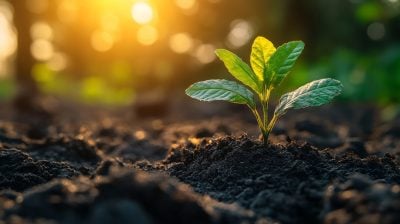Mauritians are nothing if not inventive. With the sugar industry, once the country’s economic lifeline, now in terminal decline, entrepreneurs are squeezing out whatever commercial value they can from the sugar cane. Now the Mauritius Sugar Industry Research Institute has worked out a way to turn cane waste into bio-plastic for which there is a roaring demand. Nasseem Ackbarally reports from Port-Louis.
Sugar cane is a remarkable plant. From its juice Mauritius produces special and refined sugars. The residue, called bagasse, that earlier was thrown away, is now used in co-generation with coal to produce electricity. (About 20% of the electricity used in the island comes from this renewable material).
The island also produces ethanol from molasses – Omnicane, the factory that produces it, expects to make about 20m litres of this product annually – while the scum is used as fertiliser in sugar and vegetable plantations. These add value to industry, increasing the revenue of farmers and also generating foreign currency for the island.
Mauritius is now diversifying further by looking at other elements found in the sugar cane that can be of use to the producers. It has developed, under EU funding, a methodology to produce bio-plastic out of cane waste that is presently thrown away after the harvest.
“We can develop several by-products from sugar cane without affecting the sugar production. One of them is bio-plastic from cane waste,” Salem Saumtally, director of the Mauritius Sugar Industry Research Institute (MSIRI), told African Business. Until recently, the cane waste was left in the fields, where it kept the soil humid and prevented weeds from growing.
Bio-plastic is produced by a soil bacterium called Ralstonia eutropha acting on the cane waste. But the right strain had to be imported from Brazil.
“We screened about 50 local bacteria but unfortunately, they are not as productive as the ones imported from Brazil. While we are continuing with the screening of the productive bacteria in the Mauritian soil, we can cultivate the Brazilian ones in our laboratories here,” says Seelavarn Ganeshan, Research Manager at the MSIRI.
Twenty-five kilos of bio-plastic can be produced from 150kg of cane waste. In Brazil, it takes three kilos of waste to produce one kilo of bio-plastic. “We are not using any sugar for that purpose,” claims Saumtally.
Bio-plastic has several applications in the food, pharmaceutical and cosmetic industries but its production is limited because of its high production cost. Producing bio-plastic from sugar cane waste is not only cheaper but also has a beneficial impact on the environment.
Sugar cane is already doing a good job in the fields by preventing soil erosion and also by neutralising CO2 released by industries into the atmosphere. Bio-plastic generates very little CO2 and is biodegradable as it is produced from a renewable material.
“Most importantly, bio-plastic replaces conventional plastic made from fuel that is harmful to the environment. It dissolves in a few months, while the conventional plastic remains for a hundred years in the environment, ” says Gunshiam Umrit, agricultural chemist.
Bio-plastic is becoming popular worldwide not only because it does not pollute the environment but also because it is made from a renewable material. Bio-plastic can also be produced from maize but this product is already used as food for humans and animals. The same applies to wheat and potatoes. “The idea now is to move towards biomass that has no food value,” Umrit says. Bio-plastic from cane waste is a world first.
Until now, it has been produced from sugar, maize and palm, not from cane waste. Mauritius was forced to reform its sugar industry following a decline of 36% in EU sugar prices after the end of the Sugar Protocol in 2012 and in view of the dismantling of the sugar quota, scheduled for 2017.
To adapt to the new regime, Mauritius reduced the number of its sugar factories from 17 in 1997 to four in 2014 and equipped the factories to crush more canes and produce electricity from bagasse and coal.
The industry then invested in the production of 400,000 tons of refined and special sugars annually, which are sold directly to EU consumers at very good prices.
By using the waste to produce bio-plastic, all the components of the sugar cane have a commercial value. The term ‘sugar industry’ has been changed to ‘cane industry’. The challenges forced by the reforms of the EU sugar regime have thus been transformed into huge opportunities, thereby saving the industry from closure.
The production of bio-plastic is a step forward for the Mauritian cane industry. Research into using cane tops as biomass in the production of electricity is now the next goal.
Want to continue reading? Subscribe today.
You've read all your free articles for this month! Subscribe now to enjoy full access to our content.
Digital Monthly
£8.00 / month
Receive full unlimited access to our articles, opinions, podcasts and more.
Digital Yearly
£70.00 / year
Our best value offer - save £26 and gain access to all of our digital content for an entire year!

 Sign in with Google
Sign in with Google 





